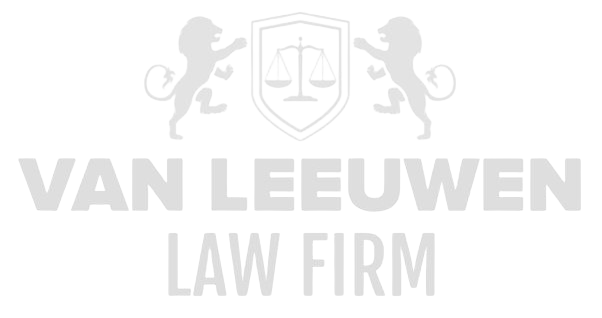In the contemporary world order, innovation is far from a neutral force; it functions as a revolutionary engine that creates new sectors, reshapes markets, and sharpens existing economic hierarchies. Where the failure of traditional structures clears the way for disruptive technologies, a stark inequality in the distribution of wealth and opportunities simultaneously emerges. Innovation does not manifest as a homogeneous process benefiting all equally, but as a selective force concentrated in regions where capital, infrastructure, and administrative competence are already firmly entrenched. Consequently, certain populations remain outside the gates of these emerging economic spheres, while others reap unprecedented gains. This dynamic not only generates economic disparity but also lays the groundwork for systemic tensions that threaten societal cohesion.
At the same time, this concentration of innovative activity raises a venomous ethical question for leaders at the helm of corporations and public institutions. The emergence of new sectors through innovation inevitably implies the redistribution of power and resources, often in ways that are legally ambiguous or morally questionable. In scenarios where the lure of rapid profit and market dominance eclipses sound judgment, the boundary between legitimate enterprise and financial mismanagement becomes perilously thin. These dynamics confront the highest echelons of management with the formidable challenge of safeguarding integrity amid an economic landscape where fraud, corruption, bribery, money laundering, and the violation of international sanctions are not merely hypothetical threats but daily realities in sectors that thrive on innovation.
Concentration of Capital and Geopolitical Asymmetry
The geographic inequality in the distribution of innovation is no accident; it is the direct outcome of the interplay between capital concentration, political influence, and infrastructural superiority. Cities and regions endowed with highly skilled labor and access to cutting-edge technologies function as magnets for investment. Peripheral regions, in contrast, are penalized by infrastructural deficiencies, limited access to capital, and weak integration into global value chains. The result is an economic apartheid of opportunity, with innovative hubs absorbing a disproportionate share of productive capacity and profit streams, while other regions remain structurally marginalized.
This concentration also carries a geopolitical dimension. Innovation becomes an instrument of power, with countries and companies that hold technological advantage exerting global influence. In a world where sanctions and international regulation play an increasingly central role, subtle forms of economic dominance emerge: corporations controlling innovative technologies can manipulate markets and supply chains, sometimes exploiting legal loopholes or navigating the gray zones between regulation and creative accounting. In such contexts, even a seemingly legitimate innovation campaign can become a vehicle for money laundering, bribery of foreign officials, or circumvention of sanctions, often without the public ever fully understanding how the rules have been manipulated.
The concentration of capital within innovative sectors further heightens oversight fragility. When vast sums intersect with complex financial structures, opportunities for mismanagement abound, frequently undetectable without deep expertise. For leaders in the C-suite, minimizing risk is not a matter of following protocols but a strategic imperative; failure to anticipate and contain financial and legal exposure can endanger the very foundation of the enterprise.
Disruption and the Ethical Implosion of New Sectors
Innovation generates sectors that are inherently disruptive, whose business models rewrite rules and norms at a pace that surpasses traditional governance mechanisms. In this context, every transaction, contract, and strategic decision becomes a potential weapon in the struggle between ethical business practice and opportunistic profit maximization. When enormous value and power concentrate in the hands of a few, it becomes almost inevitable that some actors will test or transgress the boundaries of law and regulation. The line between lawful innovation and illicit enrichment blurs, and ethical tensions intensify.
These dangers are not theoretical. Innovative companies operate in a complex international arena where financial flows traverse continents, and investments through offshore structures, shell entities, or sophisticated derivatives are standard practice. This network of possibilities facilitates corruption, fraud, and money laundering, often concealed behind a façade of legitimate commerce. Leaders in the C-suite must scrutinize every decision—from acquisitions to partnerships—for potential legal and reputational risk, lest internal or external exposure undermine the company’s success.
Disruptive innovation also reshapes internal corporate culture. Innovation-driven cultures that reward extreme performance while minimizing perceived risk can create perverse incentives. Managers and executives may be tempted to circumvent transparency or prioritize short-term gains at the expense of integrity, compliance, and public responsibility. The ethical implosion of new sectors is therefore no theoretical threat but a tangible challenge where failure carries immediate legal and financial consequences.
Social Inequality and Reputational Risk
The unequal distribution of innovative opportunities translates directly into social and economic disparity. Regions and populations that fail to benefit from new technologies become further marginalized. This reality increases the pressure on leadership to maintain both societal legitimacy and shareholder value. In a world where public expectations, ESG standards, and media scrutiny intensify exponentially, neglecting such inequalities constitutes a strategic risk. Any perception of conflict of interest or mismanagement can lead to reputational damage that, in extreme cases, threatens the very survival of the enterprise.
For the C-suite, social inequality is not merely a policy matter but a direct operational and strategic concern. Companies that fail to proactively address misconduct in their value chains risk allegations of complicity in corruption or exploitation, with attendant legal and financial consequences. Innovation thus becomes a double-edged sword: it generates wealth and market power while simultaneously increasing vulnerability to scrutiny, litigation, and international sanctions.
Reputational risk intensifies when innovation coincides with complex financial arrangements. Influential stakeholders and regulators maintain a vigilant eye on irregularities, and even the suggestion of fraud, bribery, or violations of international law can trigger a crisis. Mitigating such risks depends on the leadership’s strategic foresight, their capacity to ensure transparency, and an unwavering commitment to governance, compliance, and ethical standards at every level of the organization.
Innovation as a Moral Test for the C-Suite
The advent of new sectors through technological innovation functions as a moral test for leadership. Every strategic decision becomes a measure of integrity and vision. In a world where the boundaries between legal and illicit financial maneuvers are constantly tested, a single imprudent choice can have immediate and far-reaching consequences. Innovation demands not only business acumen but a moral compass resilient to the temptations of power, wealth, and geopolitical pressure.
C-suite executives face the challenge of crafting innovation strategies that drive economic growth while ensuring full legal and ethical compliance. Failure in this regard can result in accusations of financial mismanagement, fraud, or complicity in corrupt practices, inflicting not only financial damage but also irreparable harm to corporate reputation. Innovation is therefore not a neutral economic force but an arena where leadership is tested, where vision, ethics, and legal acumen confront one another in an unrelenting duel.
Ultimately, the distribution of innovation serves as a mirror of leadership’s ability to balance power and responsibility. The success of new sectors is measured not only in market share and financial return but also in the capacity to manage risks arising from the inherent complexity of financial, legal, and ethical challenges. Innovation reveals the true character of leadership: it creates new markets and opportunities while simultaneously exposing any weakness in integrity, judgment, and moral authority.









